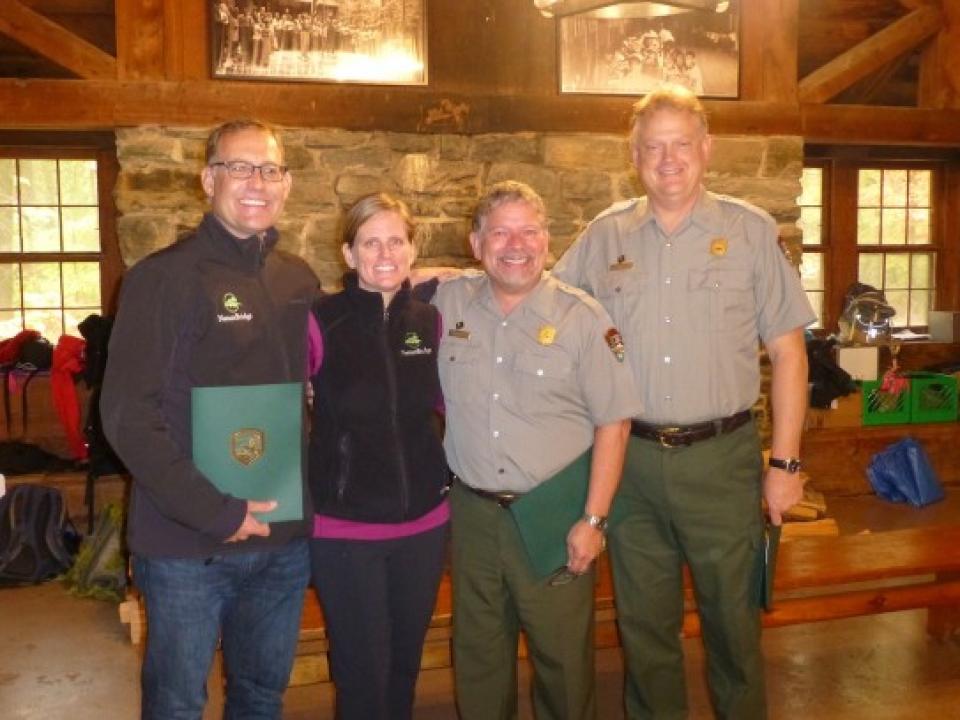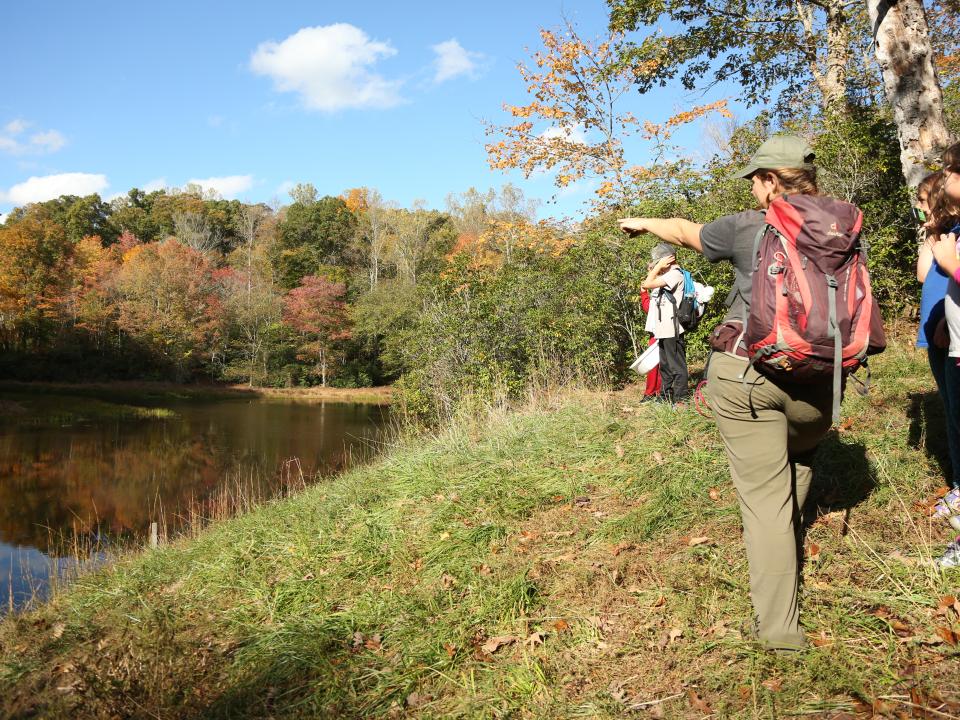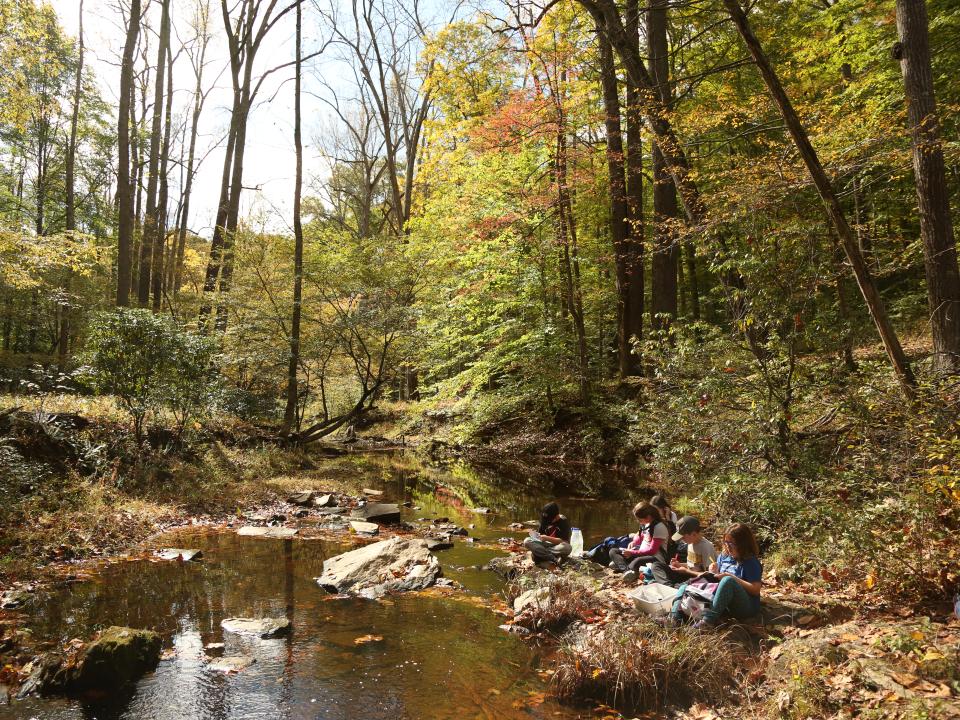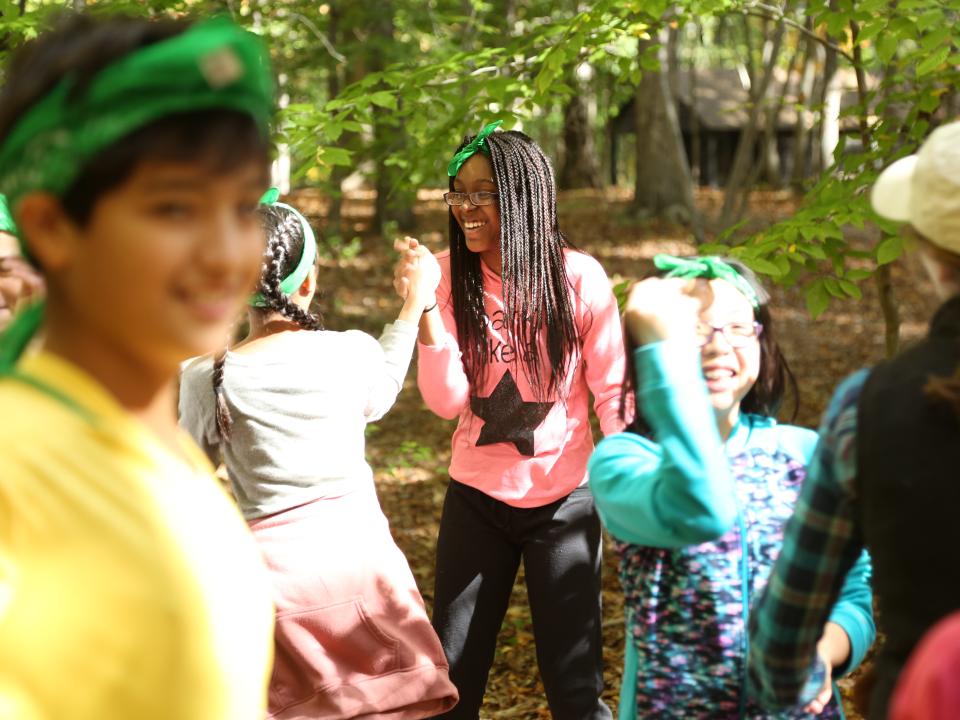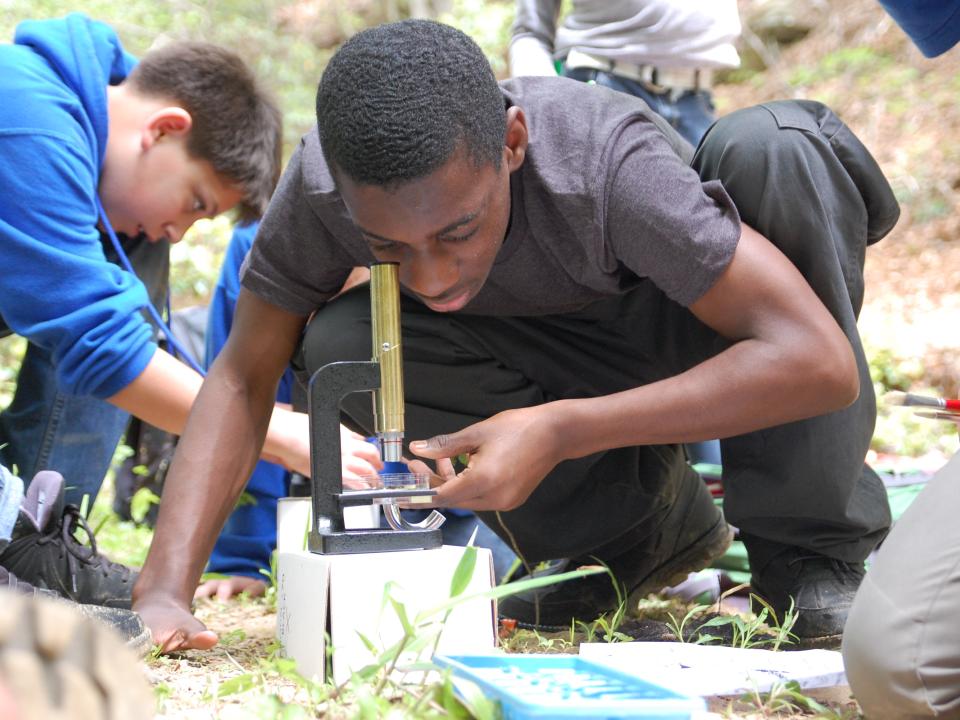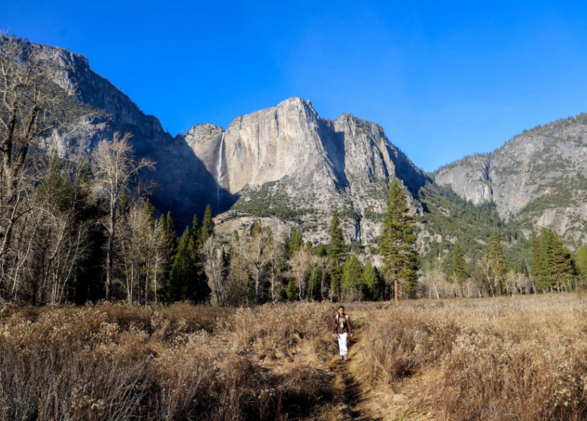Vanessa Morel's job of "many hats" and the opening of NatureBridge's East Coast campus

On the eve of April 16, 2012, Vanessa Morel busied herself with last-minute preparations in Prince William Forest Park; in less than 24 hours, the first group of school children would be visiting for NatureBridge’s inaugural program in Prince William.
“I was like a mother hen that just couldn't settle,” says Vanessa, the Founder and Principal of NextGen Conservation who was NatureBridge’s first Washington D.C. Director at the time. “It was time for me to go home and leave it in the hands of the overnight staff, but I almost couldn't leave because I just felt this awesome responsibility. Would it all work out?”
Vanessa eventually went home, leaving the very capable NatureBridge senior staff to prepare the finishing touches prior to the students’ arrival.
“I only left after they told me to go home multiple times, and then of course it was fine and there were no problems.”
Prior to 2011, NatureBridge had campuses in Yosemite National Park, Golden Gate National Recreation Area and Olympic National Park. Thanks to former Director of the National Park Service Jon Jarvis, the idea for a new campus in Prince William Forest Park, one of the early Recreational Demonstration Areas built by the Civilian Conservation Corps in 1937, was born. Vanessa was one of the key players in bringing this campus to life.
“You can't drive up and down I-95 without seeing the signs for Prince William Forest Park,” says Vanessa.
Situated just off the busy Washington D.C. eight-lane highway, Prince William Forest Park is strikingly different from other public lands where NatureBridge holds programs — it doesn’t have the name recognition of Yosemite, the multiple ecosystems of Olympic or the distinct urban setting of Golden Gate. Those three parks see a combined 22 million visitors per year while Prince William sees just 400,000. It is a verdant oasis not well known outside Virginia and D.C.
“You turn into the park off of a busy, divided highway, and the juxtaposition could not be more stark. Immediately, you’re driving down a gravel road and the farther you go, the deeper you get into the forest, and the more you feel yourself letting go of the busyness of life,” says Vanessa.
Prince William Forest is peaceful and pastoral; creeks, streams, fields and trees dot the landscape, and it feels as far away from Washington D.C. as one can imagine. When it was suggested that NatureBridge begin programming in the park, it struck many as a natural fit. There were already cabins, and the proximity to the city meant that the experience would be accessible to a diverse group of schools in the D.C. metropolitan area. Still, there were challenges to building a campus — especially the first NatureBridge campus on the East Coast.
“At first, I had to remind everyone I was the first NatureBridge employee that was not on Pacific Time. Sure, you can call me at 6:30 at night, but I'll call you at 6:30 in the morning,” Vanessa laughs.
Other challenges were less temporal and more structural. The cabins in Prince William were not winterized and all property had to be moved in and out at the beginning and end of each program season.
“I remember I was using my minivan at the time to move everything from the cabins to this storage unit that NatureBridge had rented,” says Vanessa.
And while she had immense support from her colleagues on the other side of the country, Vanessa was the only person on the ground getting the program up and running, which led to some hectic days.
“One day I remember very well: in the morning, I attended the White House summit on environmental education. Later that day, I had to decide whether to buy a commercial dishwasher with hot water sanitation versus chemical sanitation. And that evening, I drove an hour from where I live to one of the schools to make a presentation on the new NatureBridge program — how we would take care of their children, all of our risk management and emergency protocols — to get the parents of the very first school that was coming comfortable with sending their kids to us. That was all in the course of one day,” she laughs.
“Many hats.”
Building trust with a new set of school administrators and parents was one of the main challenges of starting programs 2,000 miles away from every other NatureBridge campus, though Vanessa’s background served this relationship well. Prior to working as Director of Ally Development & Partnerships at the National Parks Conservation Association and eventually becoming Vice President, East Coast within NatureBridge, she worked as a high school biology and environmental science teacher.
“I think I'm still thinking like a teacher and still thinking like a student. Both of those mindsets have been important for me,” she says. “You stay in that growth mindset.”
Her teaching background allowed her to connect with parents in a way that fostered trust, and it also inspired a true passion for the work NatureBridge was doing, even when she’d only been with the organization for a year when programs began in Prince William.
“When I was a teacher, I would sometimes start the year with a listening exercise. I would have my students learn 30 bird calls...a lot of the kids early on thought it was stupid. ‘Why do we need to learn bird calls?’ But they were eventually highly motivated by wanting to learn more calls than me and really got into it,” says Vanessa.
“Then one day at the start of a class, this young girl came running in and said, ‘Miss Morel, there are birds everywhere! I never used to hear them before and now they're waking me up in the morning!’ And I just smiled inside because I knew from that point forward, she was going to walk through a different world. From the very beginning, that’s what I felt like NatureBridge did, too — it opened children’s ears, eyes and minds to a new world.”
If you have to convince anybody that this is the right thing to be doing, all they have to do is see the program in action. It didn't matter if it was the superintendent of schools, or an elected official, government official, a principal, a funder, whatever — if you could bring them to the campus and let them see the program, they were sold.Vanessa Morel
Prince William Forest Park remains NatureBridge’s flagship East Coast campus, and has served nearly 10,000 kids since opening in 2012. For Vanessa, the challenges of the early days — forming relationships with parents and schools, moving entire camps into storage, the time difference — are vastly overshadowed by the impact of the programs.
“If you have to convince anybody that this is the right thing to be doing, all they have to do is see the program in action,” she says. “It didn't matter if it was the superintendent of schools, or an elected official, government official, a principal, a funder, whatever — if you could bring them to the campus and let them see the program, they were sold.”
As we anticipate the return of programs to Prince William Forest Park, the act of convincing should become easier than it has been during the Covid-19 pandemic.
“I hope we can come back and come back in a big way,” says Vanessa. “It’s funny, I still say ‘we’ even though I’ve not worked at NatureBridge for over five years now. But NatureBridge is very anchoring for me and for the students, too.”
Vanessa, on our video call, pulls out a comment card filled out by a student who took part in NatureBridge’s three-day program in Prince William Forest. There is a drawing of a girl holding a water testing tube.

“This young girl drew that picture of herself and wrote, ‘My favorite thing was when we did science at the pyrite mine. I was a scientist because I tested the pH.’ That’s really anchoring. At some point in her schooling she is going to look back and say ‘I was a scientist.’ That’s the power NatureBridge has.”
